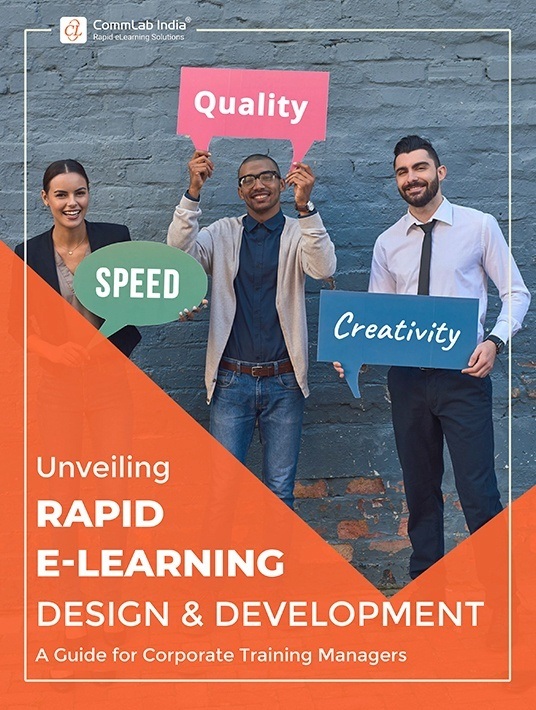How To Align Your Rapid Learning Development Strategy To Business Goals
Why do organizations train employees in the workplace? To achieve business goals. And what are these business goals? Every organization has its own unique business goals it needs to achieve. And to meet their business goals, businesses have to:
- Sell more
- Increase efficiencies
- Stay compliant
And this where training can help!

Rapid eLearning Strategy And Business Goals
The success of a business is measured by how fast and efficiently it can meet its goals. That is the reason for rapid eLearning’s appeal in corporate training today. Because it is so well aligned to the learning objectives, it meets training requirements at the speed of need. Here’s how you can create a rapid eLearning strategy that supports your business goals.
1, Conduct a Training Needs Analysis
Before you get started with any training development process, it is imperative to conduct a Training Needs Analysis (TNA). A training needs analysis looks at the organization and its overall goals and drills down into the various types of training employees need to be provided with to achieve those goals. It answers the following questions:
- What knowledge/skills/behaviors do learners currently exhibit at the workplace?
- What result in terms of knowledge/skill/behavior is expected from learners to fulfill business goals?
- What knowledge/skills/behavior must they gain to close the performance gaps?
The answers to these questions will help you frame learning objectives, decide on the best training approach (classroom? eLearning? blended learning?), and also the infrastructure (rapid authoring tools, Learning Management System, etc.).
2. Frame SMART Learning Objectives For Your Rapid eLearning Development Strategy
Learning objectives are clear statements that convey what learners will be able to do at the end of the course. The content, instructional design, assessments – all depend on the learning objectives. They let the learners know ‘what’s in it for them’ to take the course. Learning objectives need to be SMART:
Specific
They should state what learners need to accomplish at the end of the course – clearly and unambiguously.
Measurable
They should be measurable and provide a target that learners need to reach.
Attainable
They should be achievable within the time provided and under the particular conditions.
Relevant
They should be relevant to the topic of training and aligned to the larger business goal.
Time-bound
They should have a set time frame within which they have to be achieved.
3. Follow An Agile Instructional Design Model
An instructional design model is used to define the activities in the eLearning development process. ID models provide guidelines for planning, designing, developing, and delivering training to learners.
The Successive Approximation Model (SAM) follows an agile and iterative process that cuts down a lot of time by ‘catching’ the problem in the early stages of development, thereby reducing the margin for error.
SAM is a cyclic process with three phases – planning, design, and development.
- The Planning Phase is where all inputs are gathered; and the learning objectives, content, and design of the course are finalized.
- The Design Phase involves rapid prototyping where a fully functional sample of the course (the prototype) is created to provide stakeholders an idea of how the final course would look and feel.
- The Development Phase is where the actual course development and review take place before the course is ready to be rolled out to learners.
The most important differentiator of the SAM model is its iterative nature. The process is cyclical with reviews and feedback implementation at each phase.
Conclusion
Download the eBook Unveiling Rapid eLearning Design And Development – A Guide For Corporate Training Managers to find the right tools and techniques to launch a rapid eLearning development strategy that helps you achieve your primary objectives. You can also join the webinar to master the essentials of high-impact learning.

